Ethnicity Breton Name Jeanne Clisson Nickname Lioness of Brittany Died 1359, Hennebont, France | Type Privateer Children Olivier de Clisson Allegiance | |
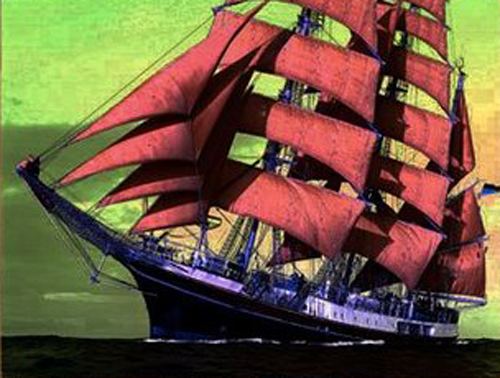 | ||
Born 1300 Belleville-sur-Vie Great grandchildren William of Blois, Count of Penthievre | ||
Grandchildren Margaret of Clisson | ||
Jeanne de clisson stetrice
Jeanne de Clisson (1300–1359), also known as Jeanne de Belleville and the Lioness of Brittany, was a Breton privateer who plied the English Channel.
Contents
- Jeanne de clisson stetrice
- Married at twelve
- Second marriage
- Third marriage
- De Clissons choose sides
- Intrigue of Vannes
- Tournament and trial
- Shock and revenge
- Change of allegiances
- Black Fleet
- Fourth marriage the English husband
- Historical evidence
- Literature
- References
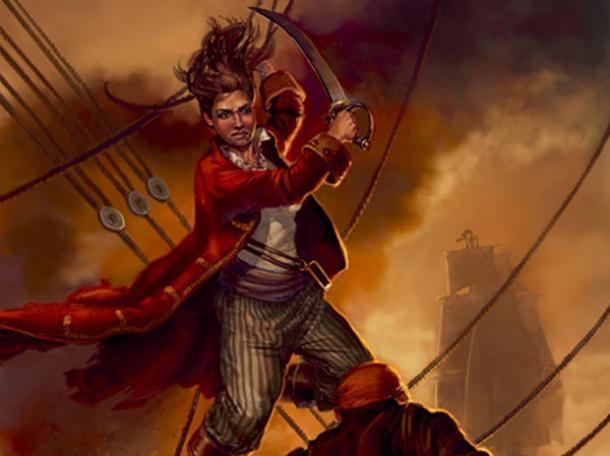
Jeanne Louise de Belleville, de Clisson, Dame de Montaigu, was born in 1300 in Belleville-sur-Vie in the Vendee, a daughter of nobleman Maurice IV Montaigu of Belleville and Palluau (1263-1304) and Létice de Parthenay of Parthenay (1276-?) in the Gâtine Vendéenne.

Married at twelve
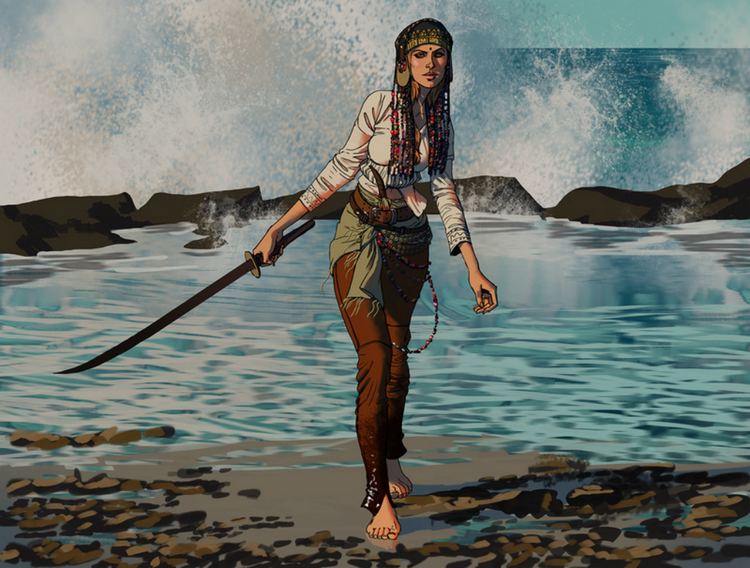
In 1312, Jeanne married her first husband, 19-year-old Geoffrey de Châteaubriant VIII (died 1326), a Breton nobleman, and had two children:
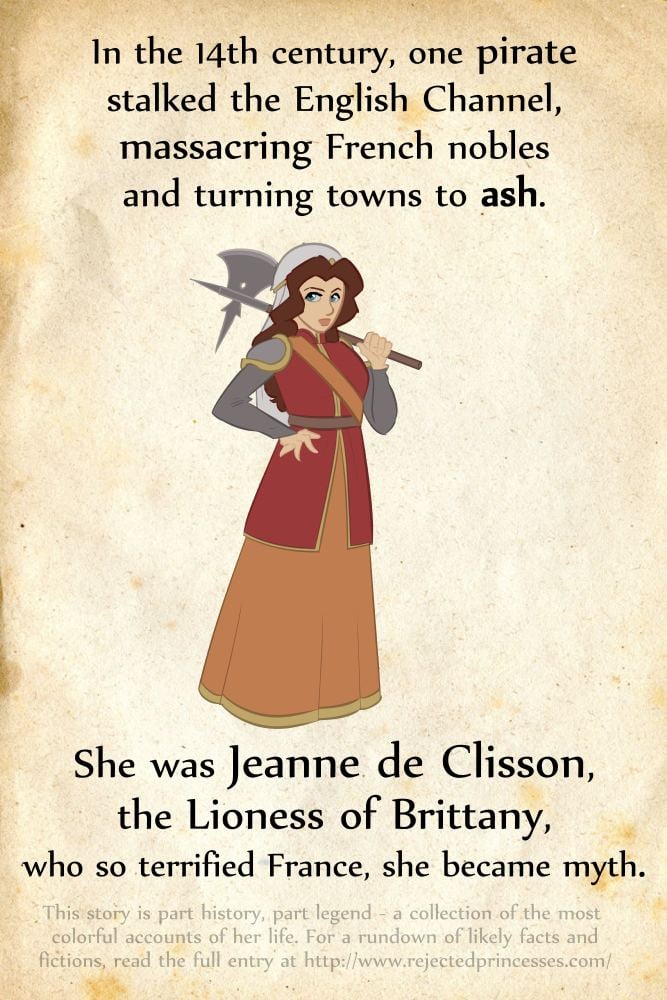
Second marriage
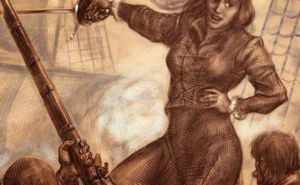
In 1328, Jeanne married, Guy of Penthièvre (fr), widower of Joan of Avaugour. The union was short lived because after an investigation, the marriage was annulled by Pope John XXII in 1330.
Third marriage

In 1330, Jeanne remarried to Olivier de Clisson IV, a wealthy Breton, holding a castle at Clisson, a manor house in Nantes and lands at Blain. Olivier was initially married to Blanche de Bouville (died 1329). Jeanne and Olivier together had five children:
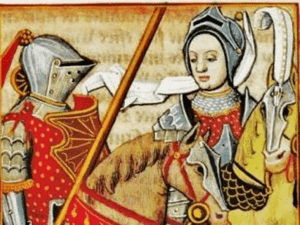
De Clissons choose sides
During the Breton War of Succession, the de Clissons sided with the French choice for the empty Breton ducal crown, Charles de Blois, against the English preference, John de Montfort. The larger de Clisson family was not in full agreement in this matter and Olivier IV's brother, Amaury de Clisson embraced the de Montfort party.
Intrigue of Vannes
In 1342, the English, after four attempts, captured Vannes. Her husband Olivier and Hervé VII de Léon, the military commanders defending this city, were captured. Olivier was the only one released after an exchange for Ralph de Stafford, 1st Earl of Stafford (a prisoner of the French), and a surprisingly low sum was demanded. This led Olivier to be subsequently suspected of not having defended the city to his fullest, and he was alleged by Charles de Blois to be a traitor.
Tournament and trial
On 19 January 1343, the Truce of Malestroit was signed between England and France. Under the perceived safe conditions of this truce, Olivier and fifteen other Breton lords were invited to a tournament on French soil, where he was arrested, taken to Paris, tried by his peers and on 2 August 1343, executed by beheading at Les Halles.
In the year of our Grace one thousand three hundred and forty-three, on Saturday, the second day of August, Olivier, Lord of Clisson, knight, prisoner in the Chatelet of Paris for several treasons and other crimes perpetrated by him against the king and the crown of France, and for alliances that he made with the king of England, enemy of the king and kingdom of France, as the said Olivier ... has confessed, was by judgement of the king given at Orleans drawn from the Chatelet of Paris to Les Halles ... and there on a scaffold had his head cut off. And then from there his corpse was drawn to the gibbet of Paris and there hanged on the highest level; and his head was sent to Nantes in Brittany to be put on a lance over the Sauvetout gate as a warning to others.
This execution shocked the nobility as the evidence of guilt was not publicly demonstrated, and the process of exposing a body was reserved mainly for low-class criminals. This execution was judged harshly by Froissart and his contemporaries.
Shock and revenge
Jeanne took her two young sons, Olivier and Guillaume, from Clisson to Nantes, to show them the head of their father at the Sauvetout gate.
Jeanne, enraged by her husband's execution, swore retribution against the French King, Philip VI, and Charles de Blois. She considered their actions a cowardly murder.
Change of allegiances
Jeanne then sold the de Clisson estates, raised a force of loyal men and started attacking French forces in Brittany.
Jeanne is said to have attacked a castle occupied by Galois de la Heuse, one of the officers of Charles de Blois, massacring the entire garrison with the exception of one individual.
Jeanne also attacked another garrison at Château-Thébaud, about 20 km south east of Nantes and a former post under control of her husband.
Black Fleet
With the English king's assistance and Breton sympathizers, Jeanne outfitted three warships. These were painted black and their sails dyed red. The flagship was named My Revenge. The ships of this Black Fleet then patrolled the English Channel hunting down French ships, whereupon her force would kill entire crews, leaving only a few witnesses to transmit the news to the French King. This earned Jeanne the moniker "The Lioness of Brittany". Jeanne continued her piracy in the channel for another 13 years.
Jeanne is also said to have attacked coastal villages in Normandy and have put several to sword and fire. In 1346, during the Battle of Crecy, south of Calais, in northern France, Jeanne used her ships to supply the English forces.
After the sinking of her flagship, Jeanne with her two sons were adrift for five days, her son Guillaume died of exposure. Jeanne and Olivier were finally rescued and taken to Morlaix by Montfort supporters.
Fourth marriage: the English husband
In 1356, Jeanne married for a fourth time to Sir Walter Bentley, one of King Edward III's military deputies during the campaign. Bentley had previously won the battle of Mauron on 4 August 1352 and was rewarded for his services with "the lands and castles" Beauvoir-sur-mer, of Ampant, of Barre, Blaye, Châteauneuf, Ville Maine, the island Chauvet and from the islands of Noirmoutier and Bouin.
Jeanne finally settled at the Castle of Hennebont, a port town on the Brittany coast, which was in the territory of her de Montfort allies, and later died there in 1359.
Historical evidence
Verifiable references relating to Jeanne’s exploits are limited, but do exist. These include:
Literature
In 1868, French writer Émile Pehant's novel Jeanne de Belleville was published in France. Written at the height of the French romantic movement, Pehant's novel shares many details with the legend attached to Jeanne.
